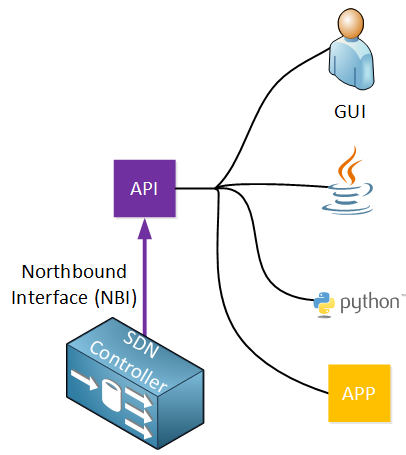The SDN controller uses two special interfaces, take a look at the image below:

Southbound Interface
The SDN controller has to communicate with our network devices in order to program the data plane. This is done through the southbound interface. This is not a physical interface but a software interface, often an API (Application Programming Interface).
An API is a software interface that allows an application to give access to other applications by using pre-defined functions and data structures. I’ll explain more about this in a minute.
Some popular southbound interfaces are:
- OpenFlow: this is probably the most popular SBI at the moment, it’s an open source protocol from theOpen Networking Foundation. There are quite a few network devices and SDN controllers that support OpenFlow.
- Cisco OpFlex: this is Cisco’s answer to OpenFlow. It’s also an open source protocol which has been submitted to the IETF for standardization.
- CLI: Cisco offers APIC-EM which is an SDN solution for the current generation of routers and switches. It uses protocols that are available on current generation hardware like telnet, SSH, and SNMP.
Northbound Interface
The northbound interface is used to access the SDN controller itself. This allows a network administrator to access the SDN to configure it or to retrieve information from it. This could be done through a GUI but it also offers an API which allows other applications access to the SDN controller. You can use this to write scripts and automate your network administration. Here are some examples:
- List information from all network devices in your network.
- Show the status of all physical interfaces in the network.
- Add a new VLAN on all your switches.
- Show the topology of your entire network.
- Automatically configure IP addresses, routing, and access-lists when a new virtual machine is created.
Here’s an illustration to help you visualize this:
